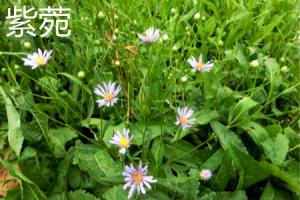How to Plant Water Plant Seeds
Water plants are a popular addition to any body of water, whether it's a pond, fountain, or aquarium. Planting water plant seeds may seem like a daunting task, but it's actually quite simple if you follow a few key steps. In this article, we'll guide you through the process of planting water plant seeds to help make your aquatic greenery dreams a reality.
Step 1: Choose the Seeds
The first step in planting water plant seeds is to choose the right type. You can find water plant seeds from many different sources, including online retailers, garden centers, or from a fellow enthusiast. Make sure to choose a seed that will thrive in the environment you're planting it in. Some popular varieties for ponds and aquariums include water lilies, lotuses, and water hyacinths.
Step 2: Prepare the Planting Container
Depending on your water plant's needs, you'll need a specific type of planting container. For example, water lilies do best in wide, shallow containers, while water hyacinths prefer deeper pots. Regardless of the type of container, make sure it's free of debris and thoroughly cleaned. You can use anything from a plastic container to a purpose-built aquatic planting container for this purpose.
Step 3: Plant the Seeds
Once you've chosen your seeds and prepared your container, it's time to plant. Water plant seeds can be quite small, so it's best to plant them in a mixture of soil and sand to help anchor the seeds in place. Simply sprinkle the seeds onto the surface of the soil, then gently press them into the mixture. If you're planting multiple seeds, be sure to space them apart to give them room to grow.
Step 4: Add Water
Water plants thrive in a wet environment, so it's important to add water to the container once the seeds are planted. Use only water that's free of chlorine and other chemicals. You can use rainwater, pond water, or a dechlorinated water source. Add enough water to the container to cover the seeds but don't fill the container to the brim. If you're planting water lilies, they require 6-8 hours of sunlight per day, so position the container in a sunny spot.
Step 5: Maintenance
After planting, it's important to maintain your water plant regularly. Make sure the plants receive sufficient light and water by checking the water level daily. Add water as needed to avoid drying out the soil. If algae begins to grow in the water, you can add an algaecide to prevent it from taking over. Also, make sure to trim the plants regularly to promote healthy growth.
Conclusion
Planting water plant seeds is a simple process that can result in beautiful greenery for your pond, fountain, or aquarium. By choosing the right seeds, preparing the container, planting the seeds, adding water, and maintaining the plants, you can enjoy the benefits of aquatic plants for years to come. Just remember to regularly monitor your plants to ensure they remain healthy and strong.

 how many times do yo...
how many times do yo... how many planted tre...
how many planted tre... how many pine trees ...
how many pine trees ... how many pecan trees...
how many pecan trees... how many plants comp...
how many plants comp... how many plants can ...
how many plants can ... how many plants and ...
how many plants and ... how many pepper plan...
how many pepper plan...





























